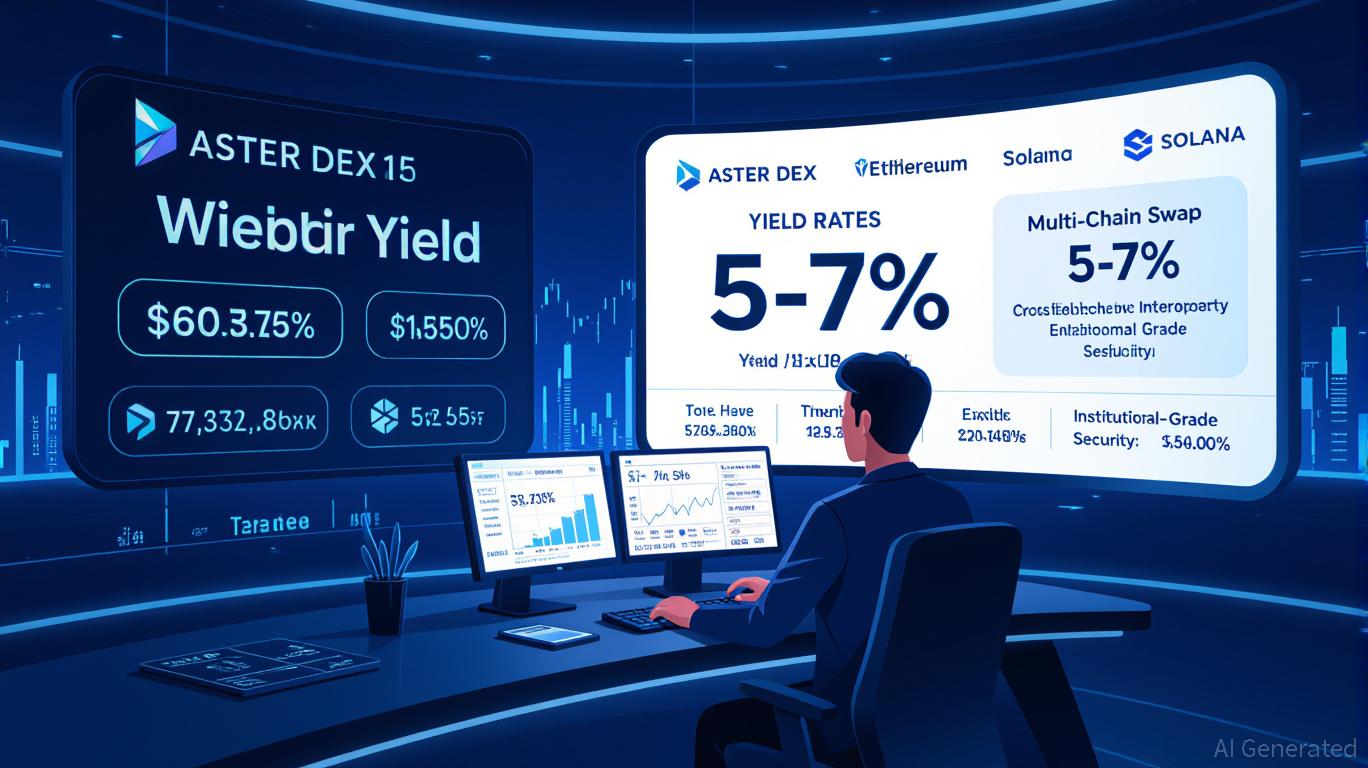The Emergence of ICP Caffeine AI in Web3 Advancement: Investing Strategically in Blockchain Protocols Powered by AI
- ICP Caffeine AI, developed by Dfinity, democratizes dApp creation via AI-blockchain integration, lowering technical barriers for developers. - The platform drove a 56% ICP token surge in one day and 385% growth over a month, with $237B TVL by Q3 2025 despite 22.4% dApp usage decline. - Strategic Microsoft Azure partnerships expand hybrid cloud utility, but regulatory risks and competition from centralized AI providers persist. - Its deflationary token model relies on sustained app adoption, contrasting w
Strategic Partnerships and Market Position
ICP Caffeine AI has formed important partnerships, especially with
The platform’s deflationary approach—burning ICP tokens to produce Cycles, which are its computational units—depends on

ROI Potential and Comparative Analysis
Blockchain platforms enhanced by AI are showing impressive returns in 2025.
ICP Caffeine AI’s results are consistent with this movement. Its appeal to institutions and its hybrid cloud alliances set it apart from rivals such as C3.ai, which
Risks and Mitigation Strategies
Despite its advantages, ICP Caffeine AI faces regulatory ambiguity and challenges in keeping users engaged.
Conclusion
ICP Caffeine AI stands out as a prime example of the investment opportunities within AI-powered blockchain protocols. Its capacity to lower technical entry barriers, secure major partnerships, and achieve rapid TVL expansion positions it at the forefront of Web3 progress. However, its future success will depend on addressing user retention and regulatory issues while leveraging the broader trend of AI and blockchain integration. For investors, the platform’s trajectory offers insight into the next generation of decentralized AI systems, where aligning with institutional and technological shifts will be key to maximizing returns.
Disclaimer: The content of this article solely reflects the author's opinion and does not represent the platform in any capacity. This article is not intended to serve as a reference for making investment decisions.
You may also like
Bitcoin Updates Today: Veteran Bitcoin Holders Selling Raises Questions: Is the Market Unstable or Undergoing a Tactical Change?
- Bitcoin OG holders are accelerating sales of decade-old BTC stashes, with $1B+ moved from pre-2018 wallets in 2025. - Analysts debate motives: Erik Voorhees sees long-term adoption focus, while Willy Woo cites quantum risk mitigation and SegWit address shifts. - Price volatility intensifies as BTC struggles to reclaim $105k-$106k support, with $722M realized losses and ETF buying ($530M) failing to offset selling pressure. - Historical patterns suggest potential 15-20% corrections, with on-chain expert D

DeFi’s Latest Gateway: How DASH’s Calculated Strategy Demonstrates Trustworthiness to Institutions
- Aster DEX's DASH token, with institutional backing, drives DeFi adoption through hybrid models. - DASH's yield-collateral model offers 5-7% returns, bridging traditional and decentralized finance. - Partnerships with Binance and $17.35B TVL validate Aster DEX's institutional credibility. - Price volatility and regulatory risks persist, but hybrid compliance tools mitigate challenges. - DASH's strategic move highlights DeFi's potential as a bridge to next-gen financial infrastructure.

Vitalik Buterin's Perspective on ZK: Driving Institutional Embrace in DeFi and Privacy-Focused Assets
- Vitalik Buterin's ZK advocacy reshapes blockchain infrastructure for DeFi and privacy-centric assets. - GKR protocol breakthroughs enable 43,000 TPS with Deutsche Bank , Sony adopting ZK-based hybrid compliance models. - Shielded CSV protocol combines ZK-SNARKs with regulatory compliance to address post-Tornado Cash scrutiny. - 2025 regulatory shifts and 70% gas fee reductions position ZK networks as strategic infrastructure for institutional crypto adoption.

AI-Generated Algorithms and Human Interaction: The Internet's Trustworthiness Dilemma
- The "Dead Internet Theory" resurfaces as AI-generated content dominates online platforms, blurring human engagement metrics. - Pixalate's Q3 2025 data reveals 37% non-human traffic in Brazilian mobile app ads, highlighting ad viewability crises. - C3.ai's 19% revenue drop and $117M loss underscore AI sector risks from high costs and competitive pressures. - Advertisers face unreliable metrics as algorithmic noise grows, prompting calls for stricter regulations and advanced analytics.
